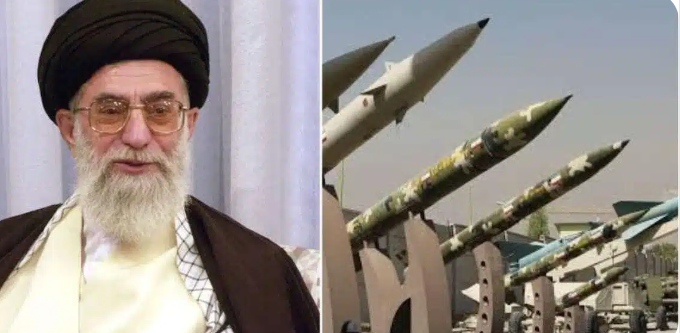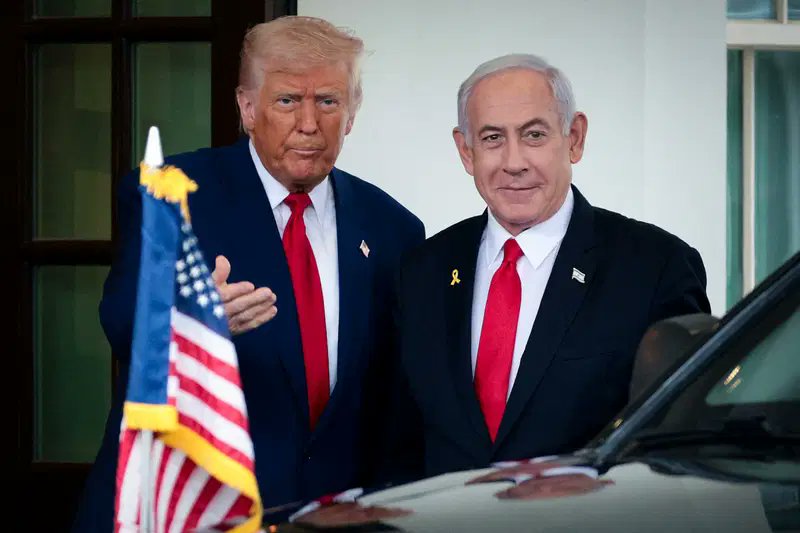
FIERY RETALIATION: Iran Bombards U.S. Bases with 10 Missiles After Trump’s Shock Attack on Nuclear Sites

In a dramatic escalation that has sent shockwaves across the Middle East and beyond, Iran launched a powerful missile assault on U.S. military bases just hours after a controversial strike by former President Donald Trump on Iran’s nuclear facilities. Tehran confirmed it fired at least 10 ballistic missiles in what it describes as a “first step” of vengeance for the airstrikes that obliterated parts of its nuclear infrastructure over the weekend.
The centerpiece of the retaliation was the Al Udeid Air Base in Qatar, the largest U.S. military hub in the region. The facility, which hosts over 11,000 American troops and more than 100 military aircraft, including strategic bombers and surveillance planes, was jolted as missiles streaked through the early morning skies. Qatari authorities quickly confirmed the activation of advanced air defense systems, with reports stating that the incoming projectiles were intercepted before impact. No casualties have been officially reported, and the base remains operational — but the message from Tehran was unmistakably loud.
Air raid sirens blared across other U.S. bases located in Iraq, Kuwait, and Bahrain, triggering emergency protocols and evacuations. While these locations did not sustain direct hits, military officials have confirmed a heightened state of alert across all American assets in the region. Footage emerging from Baghdad and Manama showed frightened civilians scrambling for cover as sirens echoed ominously above.
The assault marks a stark and dangerous new chapter in U.S.-Iran relations, which have already been strained to breaking point. President Trump, who has returned to the global stage in a controversial second run for the White House, authorized the initial airstrike that reignited tensions. According to Pentagon sources, the U.S. utilized 30,000-pound bunker buster bombs to target Iran’s uranium enrichment facilities deep within the mountains of Natanz and Fordow — installations which Tehran insists are part of its peaceful nuclear energy program.
Trump’s decision to launch such a devastating strike has drawn widespread condemnation, even from traditional allies. Several NATO countries, including Germany and France, have publicly distanced themselves from the U.S. offensive, warning of a potential spiral into full-scale war in a region already on edge. Within hours of the bombing, Iranian Supreme Leader Ayatollah Ali Khamenei vowed revenge, declaring that "the era of unchecked American aggression is over."
Speaking to international media outlets, a senior Iranian official issued a chilling warning: “This is not a one-off response. The United States will directly pay for its crimes. We are prepared for a conflict that could last up to two years. If Washington wants war, it will have it — and its soldiers will return home in coffins.”
That same rhetoric was echoed on Iranian state television, which broadcast footage of missile launches accompanied by military anthems and patriotic chants. “Our hands were tied for too long,” an anchor declared. “Now, the Islamic Republic strikes back. Up to 50,000 American troops are within our range. They are vulnerable, and they are targets.”
While the U.S. military has not released detailed information about troop movements or specific operational plans, sources within CENTCOM (United States Central Command) say all bases in the region are on “maximum security posture” and have begun strategic evacuations of non-essential personnel. In Washington, emergency meetings are underway at the Pentagon and the White House, with analysts warning that a second wave of Iranian retaliation could come within days — possibly including cyberattacks or proxy operations involving militia groups in Syria, Lebanon, or Yemen.
Public reaction inside the U.S. has been sharply divided. Trump loyalists have praised the former president for his "decisive leadership" and for "sending a strong message to rogue nations." However, critics have slammed the strikes as reckless and inflammatory, arguing that the military assault lacked congressional authorization and could drag the country into another endless war. Protesters have gathered outside government buildings in several cities, demanding de-escalation and calling for diplomatic engagement rather than violence.
In Tehran, meanwhile, mass rallies erupted in support of the retaliatory missile attack. Crowds waving Iranian flags and chanting "Death to America" filled the streets, with government-organized parades celebrating the IRGC (Islamic Revolutionary Guard Corps) for executing what many called a “daring and necessary act of defense.” Images of the missile launches have already gone viral on Iranian social media, where hashtags like #HardRevenge and #DownWithAmerica are trending.
Regional leaders are urging calm. The Emir of Qatar, Sheikh Tamim bin Hamad Al Thani, issued a statement urging “all parties to show restraint and prioritize peace,” while Saudi Arabia has called an emergency meeting of the Gulf Cooperation Council to assess the growing threat. Israeli Prime Minister Benjamin Netanyahu, a close Trump ally, voiced strong support for the U.S. action, stating, “The Iranian threat must be crushed before it crushes us.”
As of now, no formal U.S. response to the Iranian missile barrage has been issued, though insiders suggest a “measured yet firm” counteraction may be forthcoming. Intelligence analysts fear a prolonged tit-for-tat exchange could ignite wider conflict in the Middle East, potentially involving Israel, Hezbollah, and other regional powers.
Global markets have already begun to react to the escalation. Oil prices surged by over 8% in early trading, with Brent crude topping $100 per barrel for the first time in two years. Gold also spiked as investors scrambled for safe-haven assets amid rising geopolitical uncertainty. The United Nations has called an emergency Security Council meeting, and Secretary-General António Guterres has appealed for both nations to “step back from the brink.”
The coming days will be critical. With missiles flying and tempers flaring, the world watches anxiously, wondering whether the latest chapter of U.S.-Iran hostility will end in diplomacy — or detonate into a war the region may not survive.


